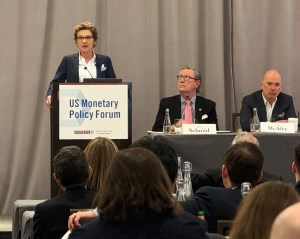When the EmergingTech Economic Network (EERN) launched earlier this year, it had one main goal: to develop and share deeper insights into the economy of the future. As such, we asked Twelfth District business contacts and community members in our latest Beige Book questionnaire about their views on and use of generative artificial intelligence (GenAI) in their organizations. The questions centered around how much they expect to invest in GenAI technologies and how their labor productivity may evolve in 2024. Here are some of the key insights we gained:
Integrating GenAI into the Business
Notably, around two-thirds of the respondents have started testing and/or using GenAI technologies in their business operations. This trend is set to continue, as another two-thirds of the respondents expressed their intention to escalate their investments in GenAI technologies in 2024.
- Responses indicated that businesses use GenAI to help with tedious, time-consuming tasks, and many contacts see investments in GenAI as necessary to remain competitive. Many businesses are actively reviewing AI-generated content for accuracy before publishing, and some have noted placing a lot of checks and balances to minimize economic, reputational, and regulatory risks.
- Businesses using GenAI are focused on the security and privacy of critical infrastructure and data. Contacts expressed caution about providing third-party or open-source GenAI software with access to proprietary information but noted the limitations of using private GenAI tools that have trained on smaller datasets.
- Businesses not currently using GenAI technologies are assessing use cases, developing policies and best practices, or waiting for more evidence that security and privacy concerns have been addressed.
Evolving Productivity and Workforce
GenAI is reportedly augmenting, rather than replacing, employees, and about two-thirds of respondents expected GenAI to boost productivity in their industry in 2024.
- Businesses that are currently using or experimenting with GenAI technologies generally agreed that GenAI has allowed their employees to be more efficient and productive, although some noted that it was difficult to measure or quantify these perceived productivity gains.
- Businesses that have invested in GenAI technologies are focusing on productivity improvements rather than headcount reductions. Investments in GenAI have allowed employees to focus on more meaningful, complex tasks and personally rewarding activities.
- Several contacts expected productivity gains from GenAI to allow their businesses to expand their operations without expanding their workforce.
- There were no reports of changes to employment levels due to GenAI investments. Nonetheless, some contacts expected a small, gradual reduction in headcounts over the coming year, particularly for lower-level positions in accounting, human resources, and sales/marketing.
This summary is based on gathered anecdotal information on current economic conditions as pertaining to GenAI in the 12th Federal Reserve District through reports from key business contacts and community members. It characterizes a variety of mostly qualitative information, gathered directly from our District’s contacts.
This summary is not a commentary on the views of Federal Reserve officials. The information from our contacts supplements the data and analysis used by Federal Reserve staff to assess economic conditions. The summary’s qualitative nature creates an opportunity to characterize dynamics and identify emerging trends in the economy that may not be readily apparent in the available economic data.
For more information on our District’s regional economy and its diverse perspectives, please refer to the Beige Book report and our District webpage. To explore more about emerging technologies and deeper insights into the economy of the future, please visit our EmergingTech Economic Research Network (EERN) website.
The views expressed here do not necessarily reflect the views of the management of the Federal Reserve Bank of San Francisco or of the Board of Governors of the Federal Reserve System.



